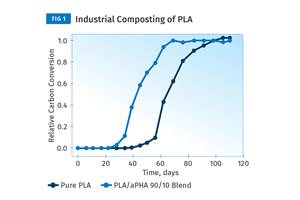Materials: Algae to Replace Starch In Bio-Hybrid Compounds
In the continuing search for renewable raw materials to replace petroleum feedstocks in plastics, the newest candidate is … seaweed.
In the continuing search for renewable raw materials to replace petroleum feedstocks in plastics, the newest candidate is … seaweed.
By the end of this year or early in 2011, Cereplast, Inc. in El Segundo, Calif. plans to commercialize grades of its Hybrid compounds utilizing marine algae biomass—in other words, dried seaweed. Cereplast currently offers two grades of Hybrid compounds—part of its Sustainables family—consisting of conventional polypropylene blended with 50% to 55% starch from corn, tapioca, wheat, and/or potatoes. Cereplast aims to replace up to 30% of the starch with dried and powdered algae. Company CEO, founder, and chairman Frederic Scheer expects algae biomass to be a “drop-in” replacement for starch in terms of material properties—and he hopes it will prove to be less expensive in the long run. In addition, it will offer the ability to substitute what would be waste biomass for starch from food crops.
Cereplast gets its dried, pressed raw material from pioneering companies that process algae into biofuel. These companies grow the algae in ponds. After pressing out the oil, the remaining biomass is shipped to Cereplast. Until this year, the startup biofuel operations could provide relatively small amounts of algae. Scaled-up biofuel producers will be able to provide enough algae for 1 million to 5 million lb of Hybrid compounds in 2011, Scheer predicts. He also sees potential in the next five to 10 years to develop bio-monomers from algae oil or biomass.
BIG GROWTH SEEN FOR BIOPLASTICS
Scheer says 2010 will see a 400% increase in shipments of all of its bio-based plastics—both Hybrid and Compostable types—over 2009, achieving a volume of 16 million lb. The company’s new compounding plant in Seymour, Ind., can produce up to 80 million lb/yr of bioplastics at full capacity. Cereplast also recently signed global distribution agreements with Ashland Distribution, Columbus, Ohio (ashland.com), and with Bunge Alimentaris in Brazil.
Cereplast scored two notable new applications for its 100%-biodegradable Compostable resins this year. These resins, now available in 11 grades, consist primarily of polylactic acid (PLA) biopolymer from Natureworks LLC (natureworksllc.com), Minnetonka, Minn., blended with various amounts of other biopolymer or renewable resources such as starch. Most recent is the announcement that starting next month, Cereplast will ship 220,000 to 330,000 lb a month of its Compostable 7003 material to Sezersan Ambalaj in Turkey for production twist-wrap films for a variety of food products to be distributed throughout Europe. The new bio twist film reportedly has good deadfold behavior, is heat-sealable, and is thinner than other twist films. It is opaque or translucent.
And just this past summer, S.R. Promocionais Ltda in Brazil announced it will produce Eko BIO ballpoint pens, about 93% of whose weight will be injection molded of Cereplast Compostable 1001 compound. Scheer says, “It is estimated that the 10 billion ink pens thrown away each year will take up to 400 years to break down in a landfill.” This is the second biodegradable pen to be introduced this year. As we reported in June, Newell Rubbermaid Inc., Atlanta, introduced Paper Mate Biodegradable pens and mechanical pencils made mostly of Mirel PHA bioplastic from Telles, Lowell, Mass. (mirelplastics.com).
Related Content
Best Practices for Purging PHA and PHA/PLA Blends
Because bioplastics are processed at lower temperatures, purging between jobs requires a different process and purging agents than those applied for traditional resins.
Read MoreMaking a Play With PHA
Processors with sustainability goals or mandates have a number of ways to reach their goals. Biopolymers are among them.
Read MoreICIS Launches: Ask ICIS Generative AI Commodities Assistant
Said to be the first of its kind, this AI assistant will enhance access to ICIS’ intelligence and insights for the energy and chemical markets.
Read MoreBlend Amorphous PHA with PLA to Improve injection Molded Part Properties
Adding aPHA to PLA can boost a range of mechanical properties and expedite composting. Here are the details as well as processing guidelines for injection molding the blends.
Read MoreRead Next
See Recyclers Close the Loop on Trade Show Production Scrap at NPE2024
A collaboration between show organizer PLASTICS, recycler CPR and size reduction experts WEIMA and Conair recovered and recycled all production scrap at NPE2024.
Read MoreFor PLASTICS' CEO Seaholm, NPE to Shine Light on Sustainability Successes
With advocacy, communication and sustainability as three main pillars, Seaholm leads a trade association to NPE that ‘is more active today than we have ever been.’
Read More













